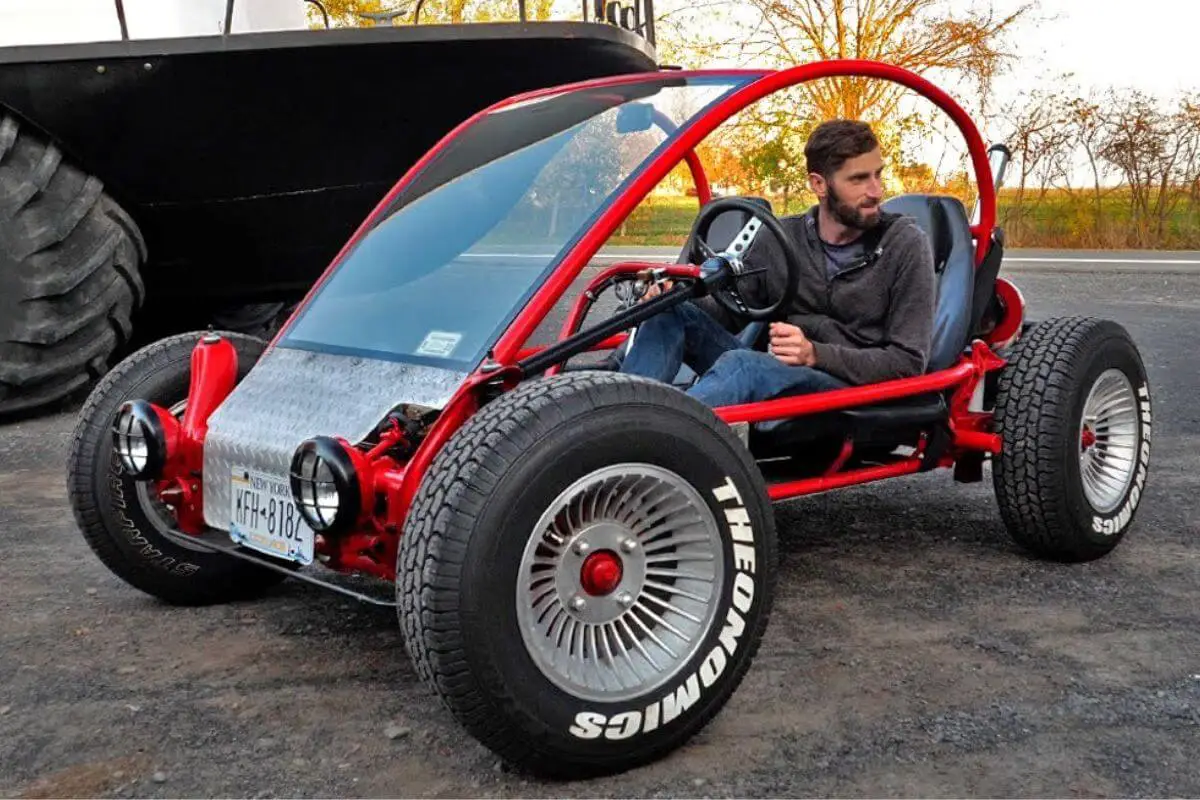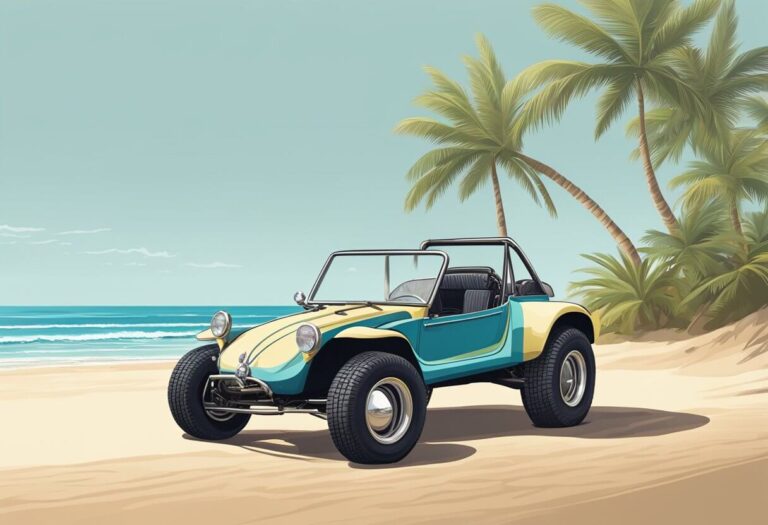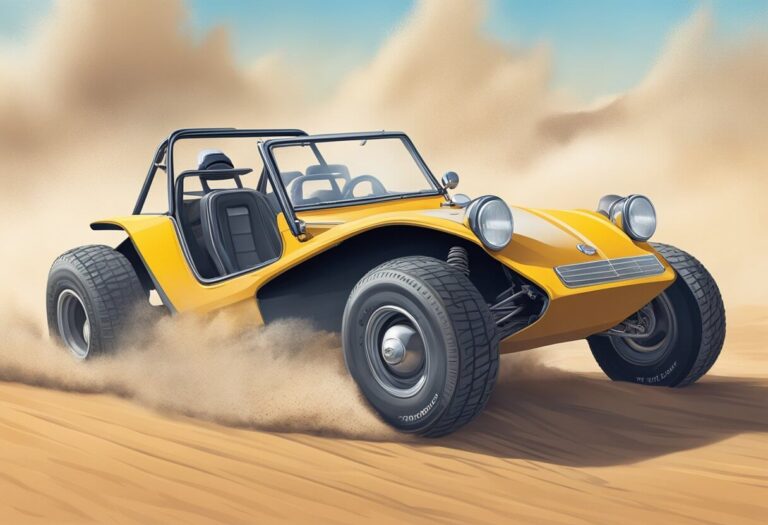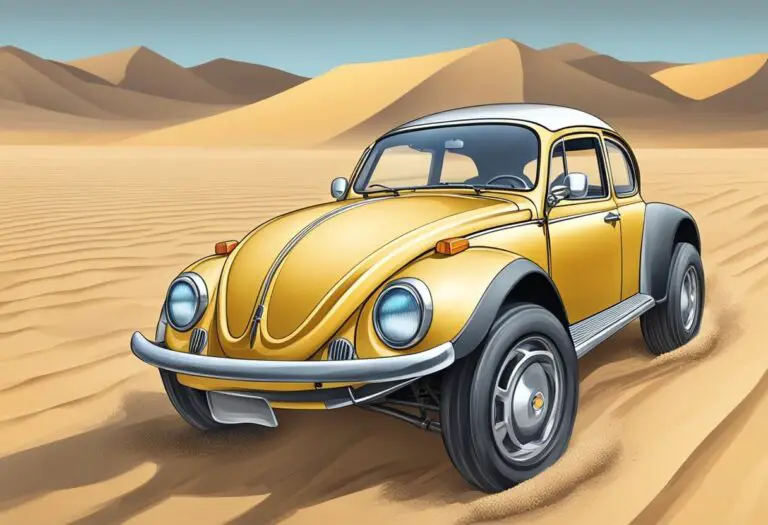The Ultimate Guide to Building Custom VW Dune Buggy

Have you ever dreamed of cruising down the beach in your own souped-up dune buggy? Or bombing over the sand dunes in a rugged off-road racer? If so, building a custom VW dune buggy could be the perfect project for you!
But how do you take a vintage Volkswagen Beetle and transform it into a wild and fun dune buggy?
In this complete guide, you’ll learn everything you need to know to build the custom VW dune buggy of your dreams from start to finish. We’ll cover:
- An overview of custom VW dune buggies and why they’re so popular
- How to get started on your VW buggy build
- Step-by-step instructions for assembling your dune buggy
- Important tips for finishing touches like paint and wiring
- How to register and drive your finished custom buggy
- Upgrades and accessories for customizing further
- Iconic VW dune buggy models through the years
- Connecting with other dune buggy enthusiasts
So let’s get started! Here’s everything you need to know to build the ultimate custom VW dune buggy.
An Overview of Custom VW Dune Buggies and Why They Are So Popular
Custom VW dune buggies, also known as beach buggies or Baja bugs, have been popular DIY car projects since the 1960s. The idea began when Bruce Meyers created the iconic Meyers Manx dune buggy using a shortened VW Beetle chassis.
VW Beetles make an ideal base for custom dune buggies thanks to their simple rear-engine design with a backbone chassis and available parts. Dune buggy builders take the Beetle frame and customize it with open-style bodies made of lightweight fiberglass or other materials.
The result is a fun recreational vehicle perfect for cruising at the beach or tearing up the sand dunes. Dune buggies offer rugged off-roading ability with unique open-air styling you can’t get from any production car.
Building a VW dune buggy yourself has always been about creativity, customization, and freedom. You can lift up the suspension for [dune] bashing ability or keep it low for beach [cruising]. Design the buggy body in a classic rounded style or make it look rugged with squared-off edges. And choose from endless options for [paint], wheels, engine upgrades, and accessories to make it your own.
If you have the time, skills, and passion for cars, assembling your own VW dune buggy can be an incredibly rewarding and fun project. Now let’s go over exactly how to get started.
How to Get Started on Your Custom VW Dune Buggy Build?
The first steps in building any custom VW dune buggy are choosing your donor VW Beetle, gathering all the necessary dune buggy parts, and deciding on what design you want for your buggy’s body and interior.
Purchasing a VW Beetle Donor Car
The base for your dune buggy will be an older air-cooled VW Beetle, ideally from the 1960s or early 1970s. Look for a Beetle that still runs well but may have some cosmetic wear – you won’t need the body panels since you’ll be replacing them.
Focus on finding a solid chassis, engine, suspension, and other components you can use for your build. Look for minimal or repairable rust damage, and try to get the engine compression tested. Expect to pay $1,000 to $4,000 for a good Beetle donor car for your dune buggy.
Assembling All the Necessary Parts and Accessories
Beyond the Beetle itself, you’ll need many additional new and used parts to finish your dune buggy:
- Dune buggy body – The open-top lightweight body that gives the buggy its unique look. Popular materials include fiberglass, ABS plastic, and aluminum.
- Chassis and suspension parts – This includes the floor pan, control arms, shocks, tires, wheels, brake parts, steering column, pedals, etc.
- Engine parts – Carburetor, exhaust, engine tin, filters, fuel pump, belts, etc. Rebuilt or performance parts are a good idea.
- Electrical components – Wiring harness, switches, battery, gauges, lights, horn, fuse box, etc.
- Interior parts – Seats, upholstery, mirrors, seat belts, roll bar, shift knob, and anything else inside.
Make a master list of everything you’ll need and start collecting parts. Combining new aftermarket dune buggy parts with recycled Beetle components works well. Be prepared for this stage to take time and research.
Choosing the Right Dune Buggy Body Style and Design
There are many styles of dune buggy bodies to consider:
- Classic rounded Meyers Manx style – The iconic smooth, rounded fiberglass body pioneered by Bruce Meyers. Still popular today.
- Square body styles – Aggressive styled bodies with straight lines and sharp angles, like the “box buggy.” Popular for off-roading.
- Custom builds – Many companies offer customized one-off dune buggy body designs to match your vision.
- DIY options – You can even build your own custom dune buggy body with the right metal or composite fabrication skills!
Think about your overall vision for the vehicle along with intended use. A curved Manx-style body is best for cruising the dunes, while a square-edged body can provide more protection for rugged off-roading.
You’ll also need to consider things like wheelbase, track width, number of seats, and where the engine will be placed. Plan it out well before cutting or welding anything!
Step-by-Step Instructions for Building a VW Dune Buggy
Once you have all the parts and your design ready, it’s time for the fun part – actually building your custom VW dune buggy!
Preparing the VW Beetle Chassis and Engine
Start by completely stripping the Beetle donor car down to the bare chassis. Remove the body, interior, drivetrain components, electrical wiring and everything else until you’re left with a bare chassis and engine block.
Thoroughly clean and degrease the chassis. Repair or replace any rusted or damaged metal. Then sandblast the chassis or have it powder coated to protect the fresh metal.
The engine will also need to be inspected and likely rebuilt with new seals, gaskets, pistons and other internal parts. You want the engine in top shape to power your finished dune buggy.
Installing the Custom Dune Buggy Body and Interior
Now you can start reassembling things! Install your dune buggy’s fiberglass or metal body tub onto the prepared chassis. Securely bolt it in place according to the manufacturer’s directions.
Then install the roll bar, bucket seats, upholstery, gauges, steering wheel and other interior components you’ll be using. Take time to ensure ergonomics and safety.
Painting and Customizing Your VW Dune Buggy
Make sure all body panels are prepped and ready for paint. You can use automotive spray paint or professional repainting. Opt for bright colors like red, yellow or orange that match the beachy vibe.
Consider a custom paint job with wild flames, racing stripes or other graphics that make your dune buggy uniquely yours. Add customized wheels, lettering or a rooftop number panel.
Important Tips for Wiring and Final Assembly
One tricky step is the wiring harness to connect all electronics. Use an aftermarket dune buggy wiring kit or create your own custom harness. Make it as tidy and well-organized as possible.
Test fit the engine and make all remaining connections – exhaust, fuel lines, throttle linkage, etc. Bolt in axles, steering linkage, pedals, shifter and the final drivetrain components.
Double check all wiring, assemblies and mounting points before starting it up!
Taking Your Finished VW Dune Buggy Out for Fun
When your VW buggy build is complete, it’s time to cruise! But first you’ll need to handle titling, registration and insurance.
How to Register and Insure Your Custom Dune Buggy
Requirements vary by state, but generally you’ll need to apply for a special title and registration for a homemade assembled vehicle. This involves submitting paperwork confirming the VIN, providing bills of sale for major components, and often getting a safety inspection.
Shop around for classic car insurance that understands modified vehicles. Specialized companies like Hagerty are a good option. Off-roading coverage is also a must if you’ll be dune bashing.
Where to Drive Your VW Buggy – Best Off-Road Locations
A custom dune buggy opens up so many exciting driving opportunities! Here are some top spots in the United States for taking your finished buggy off-roading:
- Silver Lake Sand Dunes in Michigan – Massive oceanside dunes drawing dune buggy fans from all over. Permit required.
- Coral Pink Sand Dunes in Utah – Over 3,000 acres of pink sand dunes with beautiful scenery.
- Oceano Dunes in California – Ride over the coastal sand dunes at Pismo Beach.
- Great Sand Dunes National Park in Colorado – Towering 750-foot sand peaks surrounded by forests and mountains.
- Bruneau Dunes in Idaho – Secluded sand dunes with a small lakebed play area.
Check regulations since some locations restrict dune buggies or require special off-roading permits. And always tread lightly and avoid sensitive ecosystems when off-roading.
Maintaining and Repairing Your Custom VW Dune Buggy
Like any vehicle, your homemade dune buggy will require regular maintenance and care. Watch fluid levels, check for leaks, keep up on tune-ups, and fix issues promptly.
Thankfully, the simple VW Beetle engine is easy to service yourself or through any shop that works on air-cooled VWs. Parts are readily available if repairs are needed. Proper care will keep your custom buggy running strong for years of fun.
Customizing Your Buggy Further with Accessories and Upgrades
One of the best things about building a custom dune buggy is that you can constantly add upgrades and accessories to make it your own. Here are some popular additions:
Adding Roll Bars, Suspension Lifts, and Improved Brakes
For rugged off-road use, upgrade to a taller suspension lift with increased shock travel and bigger tires. Add a reinforced roll cage or bars for safety. Upgrade to disc brakes all around.
Upgrading the Engine for More Power
Swap in a larger 1,600 cc VW engine, add dual carburetors, improve the exhaust – the possibilities are endless for more power!
Custom Paint Jobs, Wheels, Sound Systems and More!
Express yourself with custom graphics and paint. Add beadlock wheels that look great in the sand. Outfit your buggy with a booming sound system. The options for personalizing are endless.
Over time you can remake and upgrade your buggy to perfectly match how you want to use it. Build the ultimate beach cruiser or turn it into a Baja off-road racer – the choice is yours.
Volkswagen Dune Buggy Models Through the Years
The VW Beetle has served as the platform for classic dune buggy designs since the very first Meyers Manx buggies hit the sand in the 1960s. Here are some notable buggies over the decades:
The Iconic Meyers Manx Dune Buggy
It all started with the Meyers Manx, created by Bruce Meyers in 1964. Its iconic smooth fiberglass body hid a shortened Beetle chassis. Thousands were built through the 60s and 70s in DIY and kit form. It remains one of the most popular dune buggy styles.
VW Baja Bugs and Other Off-Road Legends
Baja Bugs emerged as rugged off-road racers aimed at events like the Baja 500 and 1000. They had upgraded suspension, big tires and custom bodies designed for high speed blasting through the desert.
Many other cool off-road VW variants appeared over the years – the Thing, the Country Buggy, the Subaru-powered Brat Buggy. Each put its own spin on the dune buggy concept.
Today the possibilities are endless since the classic Beetle chassis remains the perfect foundation for any type of custom dune buggy you can dream up.
Joining the VW Dune Buggy Community Online
One of the best parts of owning a unique vehicle like a custom VW dune buggy is joining the enthusiast community. Here are some ways to connect with fellow buggy builders:
Connecting with Other Enthusiasts on Forums
Forums like TheSamba.com have special sections just for dune buggy owners. You can get advice from seasoned builders, learn repair tips, and show off your finished buggy.
Finding Used VW Buggies for Sale
Browse sites like Craigslist, eBay Motors, and Facebook Marketplace to find used complete or project dune buggies for sale. You may find the perfect donor Beetle or some needed parts.
Sharing Your Custom Buggy on Social Media
Post photos of your finished buggy or build project online. Instagram, YouTube, TikTok and other platforms let you document and get feedback on your custom VW.
Connect with the vibrant community of dune buggy lovers out there. They are full of advice and eager to see your creation!
Conclusion: Build an Epic VW Dune Buggy on Your Own Terms
As you can see, building a custom VW dune buggy is an involved but incredibly rewarding project. With a solid plan, mechanical skills, some help from fellow enthusiasts, and a passion for VWs, you can create your dream beach buggy.
- Start with finding a good donor Beetle and collecting all the necessary dune buggy parts.
- Take time to design the perfect dune buggy body style for your needs.
- Build things methodically with good welding and fabrication techniques.
- Personalize your buggy with custom paint and upgrades to match your vision.
- Get ready for awesome adventures driving your creation on sand dunes and backroads everywhere you go!
Not many vehicles let you fully design, build, and customize them yourself like a VW dune buggy. If this challenge appeals to your passion for cars, don’t hesitate – start gathering parts and make your dream beach buggy a reality. The rewards of cruising in your own hand-built dune buggy are endless.






